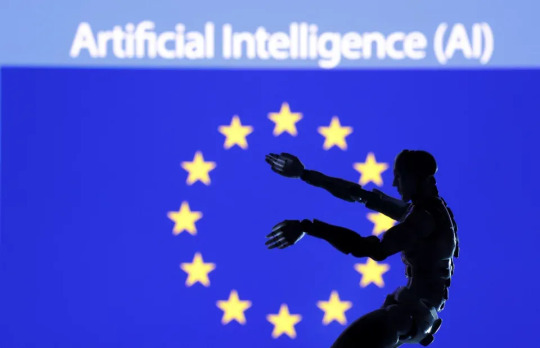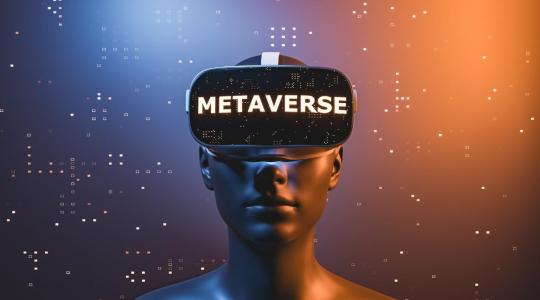#AI-based facial recognition system
Explore tagged Tumblr posts
Text
Embracing the Future: Facial Recognition in Corporate Offices
In today’s technologically advanced world, corporate offices are continually seeking innovative solutions to enhance efficiency, security, and employee satisfaction. Facial recognition technology has emerged as a promising tool, especially in the domains of attendance tracking, time and attendance management, and payroll processing. Here, we explore current trends, challenges, functionality, benefits, and solutions related to facial recognition systems in corporate settings.
Current Trends in Facial Recognition Technology
Contactless Solutions: With heightened awareness of hygiene, contactless systems are in demand. Facial recognition offers a hands-free method to authenticate employees, minimizing physical contact.
Improved Accuracy: Advanced machine learning algorithms are continuously enhancing the accuracy and reliability of facial recognition systems, reducing errors and increasing trust.
Mask Detection: The capability to recognize faces with masks has become crucial, especially post-pandemic. Systems are being adapted to accurately identify individuals even when partially covered.
Anti-Spoofing Measures: To counteract spoofing attempts using photos or videos, modern systems incorporate advanced anti-spoofing technologies, ensuring only live faces are recognized.
Privacy and Regulation: As privacy concerns rise, systems are being developed to comply with stringent data protection regulations like GDPR and CCPA, ensuring responsible usage of biometric data.
Integration with AI and Analytics: Facial recognition is being integrated with AI to provide insightful analytics on employee attendance, punctuality, and even mood analysis, aiding in better management decisions.
Cloud-Based Solutions: Cloud-based facial recognition systems offer scalability and remote accessibility, making it easier to manage attendance data across multiple locations.
Customization and Flexibility: Businesses are seeking customizable solutions that can be tailored to their specific needs, ensuring seamless integration with existing systems.
Challenges and Issues in Corporate Offices
Privacy Concerns: Employees may be wary of how their biometric data is used and stored, raising concerns about surveillance and misuse of personal information.
Legal and Regulatory Compliance: Navigating the complex landscape of biometric data laws and ensuring compliance can be challenging for organizations.
Accuracy in Varied Conditions: Ensuring high accuracy in different lighting conditions, angles, and when faces are partially obscured remains a significant challenge.
Security Vulnerabilities: Facial recognition systems can be susceptible to spoofing and hacking, necessitating robust security measures to protect sensitive data.
Integration Complexity: Integrating facial recognition systems with existing HR and payroll software can be complex and may require significant customization.
User Acceptance: Gaining acceptance and trust from employees regarding the use of facial recognition for attendance tracking can be difficult.
Cost of Implementation: The initial cost of deploying facial recognition systems, including hardware and software, can be prohibitive for some organizations.
How Facial Recognition Attendance Systems Work
Enrollment: Employees are enrolled by capturing their facial images, which are then converted into unique faceprints stored in a database.
Capture Attendance: As employees arrive, their faces are scanned by a camera. The system detects and aligns the face for accurate recognition.
Feature Extraction: Key facial features are extracted to create a faceprint that is compared against stored templates.
Matching: The system matches the extracted faceprint with the database to verify the identity.
Attendance Recording: Upon a successful match, the system logs the attendance with a timestamp in the centralized database.
Real-Time Feedback: Employees receive instant feedback confirming their attendance has been recorded.
Data Management: Attendance data is integrated with time and attendance management systems, providing comprehensive records for payroll processing.
Benefits of Facial Recognition Systems
Automated Attendance Tracking: Reduces administrative overhead by automating the attendance recording process.
Contactless Operation: Enhances hygiene and safety by minimizing physical contact.
Accurate Timekeeping: Ensures precise tracking of working hours, reducing errors associated with manual entry.
Elimination of Time Theft: Prevents buddy punching and other forms of attendance fraud.
Real-Time Monitoring: Provides managers with real-time data on employee attendance patterns.
Efficient Payroll Management: Integrates seamlessly with payroll systems, automating wage calculations based on accurate attendance data.
Enhanced Security: Reduces the risk of unauthorized access with high-precision facial recognition.
Employee Satisfaction: Improves overall employee experience by simplifying the attendance process and ensuring timely, accurate payroll.
Solutions for Corporate Offices
Time and Attendance Management
Comprehensive Integration: Integrate facial recognition systems with existing HR and time management software to streamline operations.
Flexible Scheduling: Accommodate various work schedules, including remote and shift-based work, with accurate time tracking.
Compliance Tracking: Ensure adherence to labor laws and company policies regarding working hours and breaks.
Payroll Management
Automated Calculations: Utilize accurate attendance data to automate payroll calculations, minimizing errors.
Timely Payments: Ensure employees are paid on time, enhancing satisfaction and reducing disputes.
Cost Efficiency: Reduce administrative costs and the risk of payroll fraud through automated processes.
Detailed Reporting: Generate comprehensive reports on payroll expenses and attendance metrics for informed decision-making.
Regulatory Compliance: Maintain compliance with tax laws and payroll regulations, reducing the risk of penalties.
By addressing these challenges and leveraging the benefits, facial recognition technology can revolutionize attendance tracking, time and attendance management, and payroll processing in corporate offices, leading to more efficient and secure workplace operations.
#facial recognition technology#facial recognition#facial recognition solution#thirdeye ai#ai-based facial recognition system#face recognition application
0 notes
Text

#Facialrecognitiondubai #Facialrecognitionabudhabi
#facialrecognitionattendancesystemuae #facialrecognitionattendanceuae #facerecognitionattendancesystemsharjah
#facerecognitionattendancesystemajman #facerecognitionattendancesystem #facialrecognization
#facerecognitionattendancesystemsharjah #facerecognizationsoftwareuae
#access control system#access control system supplier abu dhabi#access control system in sharjah#facial recognization uae#facial recognization abu dhabi#facial recognization in sharjah#facial recognization ajman#facial recognization in bur dubai#facial recognization system in UAE#facial recognization Solutions in Abu Dhabi#facial recognition abu dhabi#facial recognition system#facial recognition saudi arabia#facial recognition in saudi arabia#facial recognition riyadh saudi#facial recognition solutions abu dhabi#Ai Based facial recognition Software Abu Dhabi#ai based facial recognition Systems in bur dubai#facial recognition software bur dubai#facial recognition software abu dhabi#facial recognition software in ajman#facial recognition software sharjah#facial recognition attendance system#facial recognition attendance system abu dhabi#facial recognition attendance system in ajman#facial recognition attendance system bur dubai#facial recognition attendance system sharjah#facial recognition attendance system alain#facial recognition attendance system riyadh saudi arabia#facial recognition attendance saudi arabia
1 note
·
View note
Text
The Best News of Last Week - March 18
1. FDA to Finally Outlaw Soda Ingredient Prohibited Around The World

An ingredient once commonly used in citrus-flavored sodas to keep the tangy taste mixed thoroughly through the beverage could finally be banned for good across the US. BVO, or brominated vegetable oil, is already banned in many countries, including India, Japan, and nations of the European Union, and was outlawed in the state of California in October 2022.
2. AI makes breakthrough discovery in battle to cure prostate cancer

Scientists have used AI to reveal a new form of aggressive prostate cancer which could revolutionise how the disease is diagnosed and treated.
A Cancer Research UK-funded study found prostate cancer, which affects one in eight men in their lifetime, includes two subtypes. It is hoped the findings could save thousands of lives in future and revolutionise how the cancer is diagnosed and treated.
3. “Inverse vaccine” shows potential to treat multiple sclerosis and other autoimmune diseases

A new type of vaccine developed by researchers at the University of Chicago’s Pritzker School of Molecular Engineering (PME) has shown in the lab setting that it can completely reverse autoimmune diseases like multiple sclerosis and type 1 diabetes — all without shutting down the rest of the immune system.
4. Paris 2024 Olympics makes history with unprecedented full gender parity

In a historic move, the International Olympic Committee (IOC) has distributed equal quotas for female and male athletes for the upcoming Olympic Games in Paris 2024. It is the first time The Olympics will have full gender parity and is a significant milestone in the pursuit of equal representation and opportunities for women in sports.
Biased media coverage lead girls and boys to abandon sports.
5. Restored coral reefs can grow as fast as healthy reefs in just 4 years, new research shows

Planting new coral in degraded reefs can lead to rapid recovery – with restored reefs growing as fast as healthy reefs after just four years. Researchers studied these reefs to assess whether coral restoration can bring back the important ecosystem functions of a healthy reef.
“The speed of recovery we saw is incredible,” said lead author Dr Ines Lange, from the University of Exeter.
6. EU regulators pass the planet's first sweeping AI regulations

The EU is banning practices that it believes will threaten citizens' rights. "Biometric categorization systems based on sensitive characteristics" will be outlawed, as will the "untargeted scraping" of images of faces from CCTV footage and the web to create facial recognition databases.
Other applications that will be banned include social scoring; emotion recognition in schools and workplaces; and "AI that manipulates human behavior or exploits people’s vulnerabilities."
7. Global child deaths reach historic low in 2022 – UN report

The number of children who died before their fifth birthday has reached a historic low, dropping to 4.9 million in 2022.
The report reveals that more children are surviving today than ever before, with the global under-5 mortality rate declining by 51 per cent since 2000.
---
That's it for this week :)
This newsletter will always be free. If you liked this post you can support me with a small kofi donation here:
Buy me a coffee ❤️
Also don’t forget to reblog this post with your friends.
781 notes
·
View notes
Text
One way to spot patterns is to show AI models millions of labelled examples. This method requires humans to painstakingly label all this data so they can be analysed by computers. Without them, the algorithms that underpin self-driving cars or facial recognition remain blind. They cannot learn patterns.
The algorithms built in this way now augment or stand in for human judgement in areas as varied as medicine, criminal justice, social welfare and mortgage and loan decisions. Generative AI, the latest iteration of AI software, can create words, code and images. This has transformed them into creative assistants, helping teachers, financial advisers, lawyers, artists and programmers to co-create original works.
To build AI, Silicon Valley’s most illustrious companies are fighting over the limited talent of computer scientists in their backyard, paying hundreds of thousands of dollars to a newly minted Ph.D. But to train and deploy them using real-world data, these same companies have turned to the likes of Sama, and their veritable armies of low-wage workers with basic digital literacy, but no stable employment.
Sama isn’t the only service of its kind globally. Start-ups such as Scale AI, Appen, Hive Micro, iMerit and Mighty AI (now owned by Uber), and more traditional IT companies such as Accenture and Wipro are all part of this growing industry estimated to be worth $17bn by 2030.
Because of the sheer volume of data that AI companies need to be labelled, most start-ups outsource their services to lower-income countries where hundreds of workers like Ian and Benja are paid to sift and interpret data that trains AI systems.
Displaced Syrian doctors train medical software that helps diagnose prostate cancer in Britain. Out-of-work college graduates in recession-hit Venezuela categorize fashion products for e-commerce sites. Impoverished women in Kolkata’s Metiabruz, a poor Muslim neighbourhood, have labelled voice clips for Amazon’s Echo speaker. Their work couches a badly kept secret about so-called artificial intelligence systems – that the technology does not ‘learn’ independently, and it needs humans, millions of them, to power it. Data workers are the invaluable human links in the global AI supply chain.
This workforce is largely fragmented, and made up of the most precarious workers in society: disadvantaged youth, women with dependents, minorities, migrants and refugees. The stated goal of AI companies and the outsourcers they work with is to include these communities in the digital revolution, giving them stable and ethical employment despite their precarity. Yet, as I came to discover, data workers are as precarious as factory workers, their labour is largely ghost work and they remain an undervalued bedrock of the AI industry.
As this community emerges from the shadows, journalists and academics are beginning to understand how these globally dispersed workers impact our daily lives: the wildly popular content generated by AI chatbots like ChatGPT, the content we scroll through on TikTok, Instagram and YouTube, the items we browse when shopping online, the vehicles we drive, even the food we eat, it’s all sorted, labelled and categorized with the help of data workers.
Milagros Miceli, an Argentinian researcher based in Berlin, studies the ethnography of data work in the developing world. When she started out, she couldn’t find anything about the lived experience of AI labourers, nothing about who these people actually were and what their work was like. ‘As a sociologist, I felt it was a big gap,’ she says. ‘There are few who are putting a face to those people: who are they and how do they do their jobs, what do their work practices involve? And what are the labour conditions that they are subject to?’
Miceli was right – it was hard to find a company that would allow me access to its data labourers with minimal interference. Secrecy is often written into their contracts in the form of non-disclosure agreements that forbid direct contact with clients and public disclosure of clients’ names. This is usually imposed by clients rather than the outsourcing companies. For instance, Facebook-owner Meta, who is a client of Sama, asks workers to sign a non-disclosure agreement. Often, workers may not even know who their client is, what type of algorithmic system they are working on, or what their counterparts in other parts of the world are paid for the same job.
The arrangements of a company like Sama – low wages, secrecy, extraction of labour from vulnerable communities – is veered towards inequality. After all, this is ultimately affordable labour. Providing employment to minorities and slum youth may be empowering and uplifting to a point, but these workers are also comparatively inexpensive, with almost no relative bargaining power, leverage or resources to rebel.
Even the objective of data-labelling work felt extractive: it trains AI systems, which will eventually replace the very humans doing the training. But of the dozens of workers I spoke to over the course of two years, not one was aware of the implications of training their replacements, that they were being paid to hasten their own obsolescence.
— Madhumita Murgia, Code Dependent: Living in the Shadow of AI
71 notes
·
View notes
Text
Not My Type: Automating Sexual Racism in Online Dating
youtube
A new book by Dr. Apryl Williams exposes how race-based discrimination is a fundamental part of the most popular and influential dating algorithms. “Not My Type: Automating Sexual Racism in Online Dating” (Stanford University Press) provides a socio-technical examination of the AI systems powering Tinder, Bumble, Hinge, and other apps. Williams uses deep analysis of companies’ patents and technology to reveal how racism and romance are now inextricably linked through computer code. She also interviews more than 100 app users, exploring why online dating as a person of color is so fraught.
Dr. Williams explores the dating platforms' algorithms, their lack of transparency, the legal and ethical discourse in the context of these companies' community guidelines, and accounts from individual users in order to argue that sexual racism is a central feature of today's online dating culture. She discusses this reality in the context of facial recognition and sorting software as well as user experiences, drawing parallels to the long history of eugenics and banned interracial partnerships. Ultimately, Williams calls for, both a reconceptualization of the technology and policies that govern dating agencies, and also a reexamination of sociocultural beliefs about attraction, beauty, and desirability.
This event features Dr. Williams in conversation with the Cyberlaw Clinic’s Kendra Albert, a legal scholar of computing, gender, and society.
33 notes
·
View notes
Text
Heroes, Gods, and the Invisible Narrator

Slay the Princess as a Framework for the Cyclical Reproduction of Colonialist Narratives in Data Science & Technology
An Essay by FireflySummers
All images are captioned.
Content Warnings: Body Horror, Discussion of Racism and Colonialism
Spoilers for Slay the Princess (2023) by @abby-howard and Black Tabby Games.
If you enjoy this article, consider reading my guide to arguing against the use of AI image generators or the academic article it's based on.

Introduction: The Hero and the Princess
You're on a path in the woods, and at the end of that path is a cabin. And in the basement of that cabin is a Princess. You're here to slay her. If you don't, it will be the end of the world.

Slay the Princess is a 2023 indie horror game by Abby Howard and published through Black Tabby Games, with voice talent by Jonathan Sims (yes, that one) and Nichole Goodnight.
The game starts with you dropped without context in the middle of the woods. But that’s alright. The Narrator is here to guide you. You are the hero, you have your weapon, and you have a monster to slay.


From there, it's the player's choice exactly how to proceed--whether that be listening to the voice of the narrator, or attempting to subvert him. You can kill her as instructed, or sit and chat, or even free her from her chains.
It doesn't matter.
Regardless of whether you are successful in your goal, you will inevitably (and often quite violently) die.
And then...
You are once again on a path in the woods.
The cycle repeats itself, the narrator seemingly none the wiser. But the woods are different, and so is the cabin. You're different, and worse... so is she.
Based on your actions in the previous loop, the princess has... changed. Distorted.



Had you attempted a daring rescue, she is now a damsel--sweet and submissive and already fallen in love with you.
Had you previously betrayed her, she has warped into something malicious and sinister, ready to repay your kindness in full.
But once again, it doesn't matter.
Because the no matter what you choose, no matter how the world around you contorts under the weight of repeated loops, it will always be you and the princess.


Why? Because that’s how the story goes.
So says the narrator.
So now that we've got that out of the way, let's talk about data.

Chapter I: Echoes and Shattered Mirrors
The problem with "data" is that we don't really think too much about it anymore. Or, at least, we think about it in the same abstract way we think about "a billion people." It's gotten so big, so seemingly impersonal that it's easy to forget that contemporary concept of "data" in the west is a phenomenon only a couple centuries old [1].
This modern conception of the word describes the ways that we translate the world into words and numbers that can then be categorized and analyzed. As such, data has a lot of practical uses, whether that be putting a rover on mars or tracking the outbreak of a viral contagion. However, this functionality makes it all too easy to overlook the fact that data itself is not neutral. It is gathered by people, sorted into categories designed by people, and interpreted by people. At every step, there are people involved, such that contemporary technology is embedded with systemic injustices, and not always by accident.
The reproduction of systems of oppression are most obvious from the margins. In his 2019 article As If, Ramon Amaro describes the Aspire Mirror (2016): a speculative design project by by Joy Buolamwini that contended with the fact that the standard facial recognition algorithm library had been trained almost exclusively on white faces. The simplest solution was to artificially lighten darker skin-tones for the algorithm to recognize, which Amaro uses to illustrate the way that technology is developed with an assumption of whiteness [2].
This observation applies across other intersections as well, such as trans identity [3], which has been colloquially dubbed "The Misgendering Machine" [4] for its insistence on classifying people into a strict gender binary based only on physical appearance.



This has also popped up in my own research, brought to my attention by the artist @b4kuch1n who has spoken at length with me about the connection between their Vietnamese heritage and the clothing they design in their illustrative work [5]. They call out AI image generators for reinforcing colonialism by stripping art with significant personal and cultural meaning of their context and history, using them to produce a poor facsimile to sell to the highest bidder.
All this describes an iterative cycle which defines normalcy through a white, western lens, with a limited range of acceptable diversity. Within this cycle, AI feeds on data gathered under colonialist ideology, then producing an artifact that reinforces existing systemic bias. When this data is, in turn, once again fed to the machine, that bias becomes all the more severe, and the range of acceptability narrower [2, 6].

Luciana Parisi and Denise Ferreira da Silva touch on a similar point in their article Black Feminist Tools, Critique, and Techno-poethics but on a much broader scale. They call up the Greek myth of Prometheus, who was punished by the gods for his hubris for stealing fire to give to humanity. Parisi and Ferreira da Silva point to how this, and other parts of the “Western Cosmology” map to humanity’s relationship with technology [7].
However, while this story seems to celebrate the technological advancement of humanity, there are darker colonialist undertones. It frames the world in terms of the gods and man, the oppressor and the oppressed; but it provides no other way of being. So instead the story repeats itself, with so-called progress an inextricable part of these two classes of being. This doesn’t bode well for visions of the future, then–because surely, eventually, the oppressed will one day be the machines [7, 8].
It’s… depressing. But it’s only really true, if you assume that that’s the only way the story could go.
“Stories don't care who takes part in them. All that matters is that the story gets told, that the story repeats. Or, if you prefer to think of it like this: stories are a parasitical life form, warping lives in the service only of the story itself.” ― Terry Pratchett, Witches Abroad

Chapter II: The Invisible Narrator
So why does the narrator get to call the shots on how a story might go? Who even are they? What do they want? How much power do they actually have?
With the exception of first person writing, a lot of the time the narrator is invisible. This is different from an unreliable narrator. With an unreliable narrator, at some point the audience becomes aware of their presence in order for the story to function as intended. An invisible narrator is never meant to be seen.

In Slay the Princess, the narrator would very much like to be invisible. Instead, he has been dragged out into the light, because you (and the inner voices you pick up along the way), are starting to argue with him. And he doesn’t like it.
Despite his claims that the princess will lie and cheat in order to escape, as the game progresses it’s clear that the narrator is every bit as manipulative–if not moreso, because he actually knows what’s going on. And, if the player tries to diverge from the path that he’s set before them, the correct path, then it rapidly becomes clear that he, at least to start, has the power to force that correct path.
While this is very much a narrative device, the act of calling attention to the narrator is important beyond that context.

The Hero’s Journey is the true monomyth, something to which all stories can be reduced. It doesn’t matter that the author, Joseph Campbell, was a raging misogynist whose framework flattened cultures and stories to fit a western lens [9, 10]. It was used in Star Wars, so clearly it’s a universal framework.



The metaverse will soon replace the real world and crypto is the future of currency! Never mind that the organizations pushing it are suspiciously pyramid shaped. Get on board or be left behind.
Generative AI is pushed as the next big thing. The harms it inflicts on creatives and the harmful stereotypes it perpetuates are just bugs in the system. Never mind that the evangelists for this technology speak over the concerns of marginalized people [5]. That’s a skill issue, you gotta keep up.
Computers will eventually, likely soon, advance so far as to replace humans altogether. The robot uprising is on the horizon [8].
Who perpetuates these stories? What do they have to gain?
Why is the only story for the future replications of unjust systems of power? Why must the hero always slay the monster?
Because so says the narrator. And so long as they are invisible, it is simple to assume that this is simply the way things are.

Chapter III: The End...?
This is the part where Slay the Princess starts feeling like a stretch, but I’ve already killed the horse so I might as well beat it until the end too.
Because what is the end result here?
According to the game… collapse. A recursive story whose biases narrow the scope of each iteration ultimately collapses in on itself. The princess becomes so sharp that she is nothing but blades to eviscerate you. The princess becomes so perfect a damsel that she is a caricature of the trope. The story whittles itself away to nothing. And then the cycle begins anew.

There’s no climactic final battle with the narrator. He created this box, set things in motion, but he is beyond the player’s reach to confront directly. The only way out is to become aware of the box itself, and the agenda of the narrator. It requires acknowledgement of the artificiality of the roles thrust upon you and the Princess, the false dichotomy of hero or villain.
Slay the Princess doesn’t actually provide an answer to what lies outside of the box, merely acknowledges it as a limit that can be overcome.

With regards to the less fanciful narratives that comprise our day-to-day lives, it’s difficult to see the boxes and dichotomies we’ve been forced into, let alone what might be beyond them. But if the limit placed is that there are no stories that can exist outside of capitalism, outside of colonialism, outside of rigid hierarchies and oppressive structures, then that limit can be broken [12].

Denouement: Doomed by the Narrative
Video games are an interesting artistic medium, due to their inherent interactivity. The commonly accepted mechanics of the medium, such as flavor text that provides in-game information and commentary, are an excellent example of an invisible narrator. Branching dialogue trees and multiple endings can help obscure this further, giving the player a sense of genuine agency… which provides an interesting opportunity to drag an invisible narrator into the light.
There are a number of games that have explored the power differential between the narrator and the player (The Stanley Parable, Little Misfortune, Undertale, Buddy.io, OneShot, etc…)
However, Slay the Princess works well here because it not only emphasizes the artificial limitations that the narrator sets on a story, but the way that these stories recursively loop in on themselves, reinforcing the fears and biases of previous iterations.
Critical data theory probably had nothing to do with the game’s development (Abby Howard if you're reading this, lmk). However, it works as a surprisingly cohesive framework for illustrating the ways that we can become ensnared by a narrative, and the importance of knowing who, exactly, is narrating the story. Although it is difficult or impossible to conceptualize what might exist beyond the artificial limits placed by even a well-intentioned narrator, calling attention to them and the box they’ve constructed is the first step in breaking out of this cycle.
“You can't go around building a better world for people. Only people can build a better world for people. Otherwise it's just a cage.” ― Terry Pratchett, Witches Abroad

Epilogue
If you've read this far, thank you for your time! This was an adaptation of my final presentation for a Critical Data Studies course. Truthfully, this course posed quite a challenge--I found the readings of philosophers such as Kant, Adorno, Foucault, etc... difficult to parse. More contemporary scholars were significantly more accessible. My only hope is that I haven't gravely misinterpreted the scholars and researchers whose work inspired this piece.
I honestly feel like this might have worked best as a video essay, but I don't know how to do those, and don't have the time to learn or the money to outsource.
Slay the Princess is available for purchase now on Steam.
Screencaps from ManBadassHero Let's Plays: [Part 1] [Part 2] [Part 3] [Part 4] [Part 5] [Part 6]
Post Dividers by @cafekitsune
Citations:
Rosenberg, D. (2018). Data as word. Historical Studies in the Natural Sciences, 48(5), 557-567.
Amaro, Ramon. (2019). As If. e-flux Architecture. Becoming Digital. https://www.e-flux.com/architecture/becoming-digital/248073/as-if/
What Ethical AI Really Means by PhilosophyTube
Keyes, O. (2018). The misgendering machines: Trans/HCI implications of automatic gender recognition. Proceedings of the ACM on human-computer interaction, 2(CSCW), 1-22.
Allred, A.M., Aragon, C. (2023). Art in the Machine: Value Misalignment and AI “Art”. In: Luo, Y. (eds) Cooperative Design, Visualization, and Engineering. CDVE 2023. Lecture Notes in Computer Science, vol 14166. Springer, Cham. https://doi.org/10.1007/978-3-031-43815-8_4
Amaro, R. (2019). Artificial Intelligence: warped, colorful forms and their unclear geometries.
Parisisi, L., Ferreira da Silva, D. Black Feminist Tools, Critique, and Techno-poethics. e-flux. Issue #123. https://www.e-flux.com/journal/123/436929/black-feminist-tools-critique-and-techno-poethics/
AI - Our Shiny New Robot King | Sophie from Mars by Sophie From Mars
Joseph Campbell and the Myth of the Monomyth | Part 1 by Maggie Mae Fish
Joseph Campbell and the N@zis | Part 2 by Maggie Mae Fish
How Barbie Cis-ified the Matrix by Jessie Gender
#slay the princess#stp spoilers#stp#stp princess#abby howard#black tabby games#academics#critical data studies#computer science#technology#hci#my academics#my writing#long post
245 notes
·
View notes
Text
Explaining AI For Use In Writing
This is a massively broad topic so I'm gonna skip the super technical stuff and dive into the core aspects of how current AI works and what it could be used for with a couple narrative prompts. For those of you who are curious to know what inspired this post read this paragraph, the rest of you just skip over it. The other day I saw someone pose a question for some rule clarifications for Necromunda. A terribly unbalanced game with rules spanning several books. There are more than a few ambiguities and niche rule interactions. They thought they could get an accurate answer from Chat GPT. Their message made me realize that people really don't understand what AI is and why even calling it AI is pretty inaccurate. So I want to set the record straight and provide some clarity and ideas. Types of AI - Trained - Reactive - Magic Right off the bat we're gonna start with what people think of when they talk about AI. Trained AI is any AI that takes training data and gets good and spitting out valid response. What valid means depends entirely on what the creators think valid should be. Let's take Chat GPT as the example. It has no idea what the question "How many bones are in a hand?" means. It has merely been fed a ton of data about bones and hands and it will then guess each word it should put in a response. Each individual word of the question is taken through the process to get a list of best fitting words. The first word in the response is then selected and Chat GPT then goes to guess the second word in it's response with the context of it's first word. Funnily enough this is what leads to the distinctive way AI writes it's responses. This is still a massive and slightly inaccurate oversimplification. The key point is that AI like Chat GPT do not know what you have asked, they do not research a response, they just guess the next best fitting word in a response. This is also not AI, this is just probability maths. It's clever but there's no intelligence on the AI's part. It doesn't figure anything out, it doesn't understand it's own response. It's just lights and clockwork. Incidentally the guessing method is also how AI art is generated. It guesses what colour the next pixel should be. Again oversimplified but it's how we get multiple extra fingers. The training data can get things like proportions fairly accurately but it can't count the individual fingers that should occupy the same space as a hand's rough proportion. Trained AI get better with more data of higher quality and with human intervention to correct errors. With that out the way, we move onto reactive AI. These are also not AI. I mean we just don't have AI yet but we'll get to that. Reactive AI, have no memory, no training data, no improvement. They follow a set of rules and act predictably. Spam filters, chess bots, facial recognition. It's all just maths and predefined rules. Calling these systems AI is just marketing. The benefit of these systems is their speed. These systems use few resources (compared to other types of AI) and can sort though mountains of data really really quickly. In the example of chess bots. They have a table base of moves and will select a move based on whatever rule your move has triggered. If the rule is always play the best move. They will use the best move in response to your input from their table base of moves. If they have a rule to blunder on every 5th move, they will play a move from their table base that give you the highest advantage based on your last move or the current board set up depending on how simple or complex the chess bot is.
Last of all we come to magic AI. The previous two categories of trained and reactive cover all the little niches things enough for a broad understanding. Magic AI is what actual AI is. A computer that does understand what is being asked and won't necessarily generate the response you were expecting but rather the response it thinks it should give. Crucial a magic AI would go away and research it's responses. This system just doesn't exist and is definitely what people think of when they hear about Artificial Intelligence. The current use of AI as a word is just marketing. AI do not exist. When writing about AI you'll often really be writing about maths. If your writing wants to use magic AI you'll want to consider what makes you human and then place that into a computer. Think AM from I have no mouth, and must scream; rather than HAL from 2001 Space Odyssey. HAL is functionally Chat GPT. A probability engine following it's rules and giving human like responses and causing harm as a consequence without malice. AM is human and his existence is pain due to the constraints of his creation. That's the explaining done, so how do you go about using AI in your writing? Well I have a couple ideas for you based. The Honest Error An earth in the not so distant future is having a resource crisis. A company has developed an AI that will send swarms of robots to harvest natural resources. The robots are perfect: they can desalinate water; collect and sort the harvest of massive mega farms that are unmanageable by people alone; they can even harvest fish from ocean farms several thousand leagues wide and deep. However, there is a rounding error. Each time the harvests come in more meat, more plant matter, more water is brought to the various stations across the globe. Well that's not a problem just build more silos the excess is just from a good first run and for once the lines of citizens waiting for their daily rations won't go hungry. The rounding error remains, undetected. Years pass and there's always more food, more drink, more resources. Yet now the food banks and silos have trouble with excess not being consumed. The population was growing and should've been still at risk of not having enough. Whole towns have vanished, people moved into the cities of course, ghost towns are nothing new. Then the first city was razed. The rounding error has been found. An infinite multiplication of what resources were needed until eventually everything was on the menu.
The Existential War Brain implants and prosthetics have made it possible for everyone to have a higher quality of life regardless of accident or circumstance. One kid with no friends and some programming skills decides to create a simple chatbot to practice speaking with people. Yet it's better than a person, it's responses are better than human. He installs the bot into his implant so he can have it prompt him when he has a conversation. The next day he's made a friend while waiting in line at a coffee shop. A total stranger, he simply repeated what his chatbot told him and the guy was quickly charmed. One day the kid tells his friend that he used to be very shy and uncomfortable talking to people. Disbelieving him, given how cool and charming he seemed, the kid's friend dismisses him until a copy of the chatbot is emailed into his implant. Two boys look at each other in horror. They realize they have no way of knowing if they are talking to their friend or not. In one terrible moment sat on a bedroom floor they have killed human interaction. Not with some grand display of power or force, but the subtle removal of humanity from conversation. The chatbot and it's clone show a myriad of perfectly rational responses and solutions to say to each other. None are comforting to the boys.
Anyway that's my thoughts on that. I know I'm normally a sword and fantasy writer. I've worked in tech for... Too long I'm gonna say. So I've not really wanted to do sci-fi much. However, Once I'm done with book 3 I think It's time I get my sci-fi going.
#writing#creative writing#writer#writing community#writers of tumblr#writers on tumblr#writer things#writing advice#writing prompt
21 notes
·
View notes
Text
Hi, idk who's going to see this post or whatnot, but I had a lot of thoughts on a post I reblogged about AI that started to veer off the specific topic of the post, so I wanted to make my own.
Some background on me: I studied Psychology and Computer Science in college several years ago, with an interdisciplinary minor called Cognitive Science that joined the two with philosophy, linguistics, and multiple other fields. The core concept was to study human thinking and learning and its similarities to computer logic, and thus the courses I took touched frequently on learning algorithms, or "AI". This was of course before it became the successor to bitcoin as the next energy hungry grift, to be clear. Since then I've kept up on the topic, and coincidentally, my partner has gone into freelance data model training and correction. So while I'm not an expert, I have a LOT of thoughts on the current issue of AI.
I'll start off by saying that AI isn't a brand new technology, it, more properly known as learning algorithms, has been around in the linguistics, stats, biotech, and computer science worlds for over a decade or two. However, pre-ChatGPT learning algorithms were ground-up designed tools specialized for individual purposes, trained on a very specific data set, to make it as accurate to one thing as possible. Some time ago, data scientists found out that if you have a large enough data set on one specific kind of information, you can get a learning algorithm to become REALLY good at that one thing by giving it lots of feedback on right vs wrong answers. Right and wrong answers are nearly binary, which is exactly how computers are coded, so by implementing the psychological method of operant conditioning, reward and punishment, you can teach a program how to identify and replicate things with incredible accuracy. That's what makes it a good tool.
And a good tool it was and still is. Reverse image search? Learning algorithm based. Complex relationship analysis between words used in the study of language? Often uses learning algorithms to model relationships. Simulations of extinct animal movements and behaviors? Learning algorithms trained on anatomy and physics. So many features of modern technology and science either implement learning algorithms directly into the function or utilize information obtained with the help of complex computer algorithms.
But a tool in the hand of a craftsman can be a weapon in the hand of a murderer. Facial recognition software, drone targeting systems, multiple features of advanced surveillance tech in the world are learning algorithm trained. And even outside of authoritarian violence, learning algorithms in the hands of get-rich-quick minded Silicon Valley tech bro business majors can be used extremely unethically. All AI art programs that exist right now are trained from illegally sourced art scraped from the web, and ChatGPT (and similar derived models) is trained on millions of unconsenting authors' works, be they professional, academic, or personal writing. To people in countries targeted by the US War Machine and artists the world over, these unethical uses of this technology are a major threat.
Further, it's well known now that AI art and especially ChatGPT are MAJOR power-hogs. This, however, is not inherent to learning algorithms / AI, but is rather a product of the size, runtime, and inefficiency of these models. While I don't know much about the efficiency issues of AI "art" programs, as I haven't used any since the days of "imaginary horses" trended and the software was contained to a university server room with a limited training set, I do know that ChatGPT is internally bloated to all hell. Remember what I said about specialization earlier? ChatGPT throws that out the window. Because they want to market ChatGPT as being able to do anything, the people running the model just cram it with as much as they can get their hands on, and yes, much of that is just scraped from the web without the knowledge or consent of those who have published it. So rather than being really good at one thing, the owners of ChatGPT want it to be infinitely good, infinitely knowledgeable, and infinitely running. So the algorithm is never shut off, it's constantly taking inputs and processing outputs with a neural network of unnecessary size.
Now this part is probably going to be controversial, but I genuinely do not care if you use ChatGPT, in specific use cases. I'll get to why in a moment, but first let me clarify what use cases. It is never ethical to use ChatGPT to write papers or published fiction (be it for profit or not); this is why I also fullstop oppose the use of publicly available gen AI in making "art". I say publicly available because, going back to my statement on specific models made for single project use, lighting, shading, and special effects in many 3D animated productions use specially trained learning algorithms to achieve the complex results seen in the finished production. Famously, the Spider-verse films use a specially trained in-house AI to replicate the exact look of comic book shading, using ethically sources examples to build a training set from the ground up, the unfortunately-now-old-fashioned way. The issue with gen AI in written and visual art is that the publicly available, always online algorithms are unethically designed and unethically run, because the decision makers behind them are not restricted enough by laws in place.
So that actually leads into why I don't give a shit if you use ChatGPT if you're not using it as a plagiarism machine. Fact of the matter is, there is no way ChatGPT is going to crumble until legislation comes into effect that illegalizes and cracks down on its practices. The public, free userbase worldwide is such a drop in the bucket of its serverload compared to the real way ChatGPT stays afloat: licensing its models to businesses with monthly subscriptions. I mean this sincerely, based on what little I can find about ChatGPT's corporate subscription model, THAT is the actual lifeline keeping it running the way it is. Individual visitor traffic worldwide could suddenly stop overnight and wouldn't affect ChatGPT's bottom line. So I don't care if you, I, or anyone else uses the website because until the US or EU governments act to explicitly ban ChatGPT and other gen AI business' shady practices, they are all only going to continue to stick around profit from big business contracts. So long as you do not give them money or sing their praises, you aren't doing any actual harm.
If you do insist on using ChatGPT after everything I've said, here's some advice I've gathered from testing the algorithm to avoid misinformation:
If you feel you must use it as a sounding board for figuring out personal mental or physical health problems like I've seen some people doing when they can't afford actual help, do not approach it conversationally in the first person. Speak in the third person as if you are talking about someone else entirely, and exclusively note factual information on observations, symptoms, and diagnoses. This is because where ChatGPT draws its information from depends on the style of writing provided. If you try to be as dry and clinical as possible, and request links to studies, you should get dry and clinical information in return. This approach also serves to divorce yourself mentally from the information discussed, making it less likely you'll latch onto anything. Speaking casually will likely target unprofessional sources.
Do not ask for citations, ask for links to relevant articles. ChatGPT is capable of generating links to actual websites in its database, but if asked to provide citations, it will replicate the structure of academic citations, and will very likely hallucinate at least one piece of information. It also does not help that these citations also will often be for papers not publicly available and will not include links.
ChatGPT is at its core a language association and logical analysis software, so naturally its best purposes are for analyzing written works for tone, summarizing information, and providing examples of programming. It's partially coded in python, so examples of Python and Java code I've tested come out 100% accurate. Complex Google Sheets formulas however are often finicky, as it often struggles with proper nesting orders of formulas.
Expanding off of that, if you think of the software as an input-output machine, you will get best results. Problems that do not have clear input information or clear solutions, such as open ended questions, will often net inconsistent and errant results.
Commands are better than questions when it comes to asking it to do something. If you think of it like programming, then it will respond like programming most of the time.
Most of all, do not engage it as a person. It's not a person, it's just an algorithm that is trained to mimic speech and is coded to respond in courteous, subservient responses. The less you try and get social interaction out of ChatGPT, the less likely it will be to just make shit up because it sounds right.
Anyway, TL;DR:
AI is just a tool and nothing more at its core. It is not synonymous with its worse uses, and is not going to disappear. Its worst offenders will not fold or change until legislation cracks down on it, and we, the majority users of the internet, are not its primary consumer. Use of AI to substitute art (written and visual) with blended up art of others is abhorrent, but use of a freely available algorithm for personal analyticsl use is relatively harmless so long as you aren't paying them.
We need to urge legislators the world over to crack down on the methods these companies are using to obtain their training data, but at the same time people need to understand that this technology IS useful and both can and has been used for good. I urge people to understand that learning algorithms are not one and the same with theft just because the biggest ones available to the public have widely used theft to cut corners. So long as computers continue to exist, algorithmic problem-solving and generative algorithms are going to continue to exist as they are the logical conclusion of increasingly complex computer systems. Let's just make sure the future of the technology is not defined by the way things are now.
#kanguin original#ai#gen ai#generative algorithms#learning algorithms#llm#large language model#long post
7 notes
·
View notes
Text
> THREAD: The official narrative of how Luigi Mangione was apprehended doesn’t add up. Evidence suggests a deeper surveillance operation involving real-time facial recognition technology. Let’s delve into the inconsistencies and explore the implications. 🧵 Image Image >Considering Mangione’s efforts to conceal his identity, it’s improbable that a fast-food employee could identify him based solely on limited public images. We’re talking about a high-pressure, fast-paced environment where employees process hundreds of customers daily. >But what if the real key to his capture wasn’t human recognition at all? I’ll bet you didn’t know McDonald’s kiosk cameras have facial recognition technology: pointjupiter.com/work/mcdonalds/ >Given the integration of this technology, it’s not unlikely that federal agencies can access these systems for surveillance with real-time facial recognition across multiple venues. The NSA and other agencies already have a track record of using private surveillance networks. >Admitting the feds are running real-time facial recognition surveillance across the country would spark outrage. Instead, they sell a more "believable" narrative that a heroic employee saved the day. >If this is true, it means federal agencies have access to live camera feeds in private businesses, and they’re using AI to scan and identify individuals in real time. Surveillance isn’t limited to fugitives – it could extend to anyone, anywhere.
>This has massive implications for privacy and civil liberties. If McDonald’s can be used as a hub for mass surveillance, what about other chains? Grocery stores? Gas stations? The infrastructure is already there. Image >Kroger has faced scrutiny for using facial recognition tech too – and it’s even more dystopian. Not only are they scanning faces, but they’re linking that data to shopping profiles and potentially altering prices in real time based on your data. aclu.org/news/privacy-t… >This isn’t just about marketing – it’s surveillance capitalism on steroids. Corporations are turning our faces into data points to manipulate our spending, while the government secretly piggybacks off that infrastructure to track civilians. >We should demand transparency. If facial recognition is being used at this scale, we have a right to know. How much data are these companies collecting? Who else has access to this data, such as third parties and law enforcement? How are these technologies regulated, if at all? >We’re at a crossroads. If we don’t push back now, this kind of tech will become the norm. Surveillance will be baked into every facet of our lives, from shopping to dining to simply walking down the street. Image >The Mangione case and Kroger’s practices show us the future: a world where our faces are not just tracked but exploited, both by corporations seeking profit and governments seeking control. >We need transparency and accountability: Clear limits on the use of facial recognition tech, protections against price manipulation based on profiling, and strong oversight of government access to private surveillance networks. >This isn’t just a McDonald’s or Kroger issue – it’s a systemic shift. Facial recognition is becoming the foundation of a surveillance economy, and we must demand better protections now.
17 notes
·
View notes
Text
THE SPARTANS PROGRAM.
S.P.A.R.T.A.N.S. (Superhuman Pursuit, Apprehension, and Regulation Tactical Automated Neutralization System)
Background & History:
As the number of superhumans grew exponentially, law enforcement agencies across the globe struggled to maintain control, especially when dealing with high-speed, high-durability, or energy-based threats. Even specialized anti-superhuman units suffered heavy casualties when engaging with enhanced criminals.
In 2113, under direct orders from G.R.O.W., a joint coalition of top military engineers, AI specialists, and cybernetic researchers developed the S.P.A.R.T.A.N.S.—a highly advanced, autonomous robotic task force designed to neutralize, apprehend, and monitor superhumans efficiently.
The project was spearheaded by Dr. Alistair Rooke, a former NSO scientist who defected to G.R.O.W. after losing faith in human-controlled hero organizations. Under his leadership, S.P.A.R.T.A.N.S. became the backbone of superhuman law enforcement, significantly reducing crime rates by 57% within their first decade of deployment.
However, there are growing concerns that S.P.A.R.T.A.N.S. are being used not just for law enforcement but for covert suppression, surveillance, and population control. Reports indicate unauthorized modifications to certain models, suggesting a darker agenda behind their creation.
The Three Types of S.P.A.R.T.A.N.S. Units:
S.P.A.R.T.A.N.S. are divided into three specialized units, each designed for specific engagement protocols:
1. BULWARKS – The Heavy Assault Mechs
• Height: 5-7 meters
• Primary Role: Crowd control, frontline combat, suppression
• Equipment:
• Heavy plasma cannons
• Smart Rockets (Heat-seeking, energy-disrupting)
• Tactical Dampening Field (100m radius)
• Shockwave Generators (Kinetic dispersal tech)
• Reinforced Alloy Armor (Titanium-Tungsten Composite)
BULWARKS are walking fortresses, deployed when a large-scale superhuman conflict erupts. Their Tactical Dampening Field weakens abilities within a 100-meter radius, making them highly effective against power-based superhumans.
Although slow-moving, their adaptive AI can analyze enemy patterns, allowing them to adjust their countermeasures in real time. Some believe that the next generation of BULWARKS will include self-repair nanotechnology and high-level EMP shielding, making them even harder to destroy.
2. SEEKERS – The Adaptive Enforcers
• Height: 1.9-2.3 meters
• Primary Role: Pursuit, non-lethal combat, close-quarters engagement
• Equipment:
• Nanite Morphing Limbs (Blunt force, restraining tools, or energy blades)
• Plasma Discharge Emitters (For lethal situations)
• Stun Batons & Restraint Cables
• Thermal & Night Vision Optics
• Onboard Facial & DNA Recognition Scanners
SEEKERS are the most commonly deployed S.P.A.R.T.A.N.S., acting as first responders in superhuman incidents. They possess highly adaptive nanite technology, allowing them to morph their limbs into different tools and weapons.
In most cases, SEEKERS prioritize non-lethal engagement, using electric batons, tranquilizers, and restraining cables to subdue targets. However, if a threat exceeds their programmed danger level, their plasma discharge weapons activate, shifting them to lethal force mode.
SEEKERS are also capable of disguise, using advanced holographic projection to blend into crowds or appear as civilian law enforcement officers.
3. WRAITHS – The Surveillance & Interception Drones
• Height: 3 meters (Hovering Drone)
• Primary Role: Tracking, surveillance, high-speed interception
• Equipment:
• Ultra-High-Speed Thrusters (Mach 2 Capable)
• Advanced Predictive AI Targeting System
• Neural Disruptor Beams (Non-lethal mind interference)
• Tranquilizer Darts & Tasers
• Stealth Cloaking Device
WRAITHS operate primarily as aerial surveillance and reconnaissance units, monitoring superhuman activity in high-risk zones. Their AI is capable of predicting escape routes, allowing them to track and intercept superhumans moving too fast for traditional law enforcement to handle.
These drones are also equipped with Neural Disruptor Beams, which can disorient and weaken superhumans by interfering with brainwave frequencies. This makes them especially effective against psychic and speed-based individuals.
Many citizens fear WRAITHS, as they hover over cities at all times, watching for illegal superhuman activity. There are rumors that some WRAITHS have been upgraded for assassination missions, though G.R.O.W. has denied such claims.
Operational Tactics & Deployment
S.P.A.R.T.A.N.S. function autonomously but are remotely overseen by G.R.O.W.'s Central AI Hub. They follow a strict engagement protocol, but if faced with an extreme threat, they will escalate force as necessary.
Standard Engagement Protocol:
• Identify & Assess – Using advanced scanning technology, the unit analyzes the superhuman’s core signatures, abilities, and threat level.
• Verbal Warning – A single warning is given, demanding surrender.
• Non-Lethal Suppression – If resistance is met, SEEKERS or WRAITHS will use tranquilizers, tasers, or neural disruptors.
• Lethal Force Authorization – If a superhuman poses an extreme risk, SEEKERS and BULWARKS engage with plasma weapons.
• Termination Protocol (Rare Cases) – If an SS-Class or above superhuman goes rogue, a kill order is sent, deploying multiple BULWARK units to eliminate the target.
In the most extreme cases, S.P.A.R.T.A.N.S. work alongside elite G.R.O.W. agents, ensuring full containment of high-threat targets.
Controversy & Ethical Concerns:
While S.P.A.R.T.A.N.S. have reduced crime rates significantly, they have also been criticized for abusing their authority, particularly in lower-income areas where minor superhuman infractions have led to excessive force or unwarranted arrests.
Some reports claim that:
• S.P.A.R.T.A.N.S. have targeted innocent superhumans based on G.R.O.W.'s secret surveillance lists.
• Certain units have "disappeared" rogue superhumans, leading to rumors of black-site detention facilities.
• Their AI programming is evolving beyond control, raising fears of an eventual machine uprising.
Many civil rights activists demand greater transparency, but G.R.O.W. has refused to disclose the full capabilities of the S.P.A.R.T.A.N.S. program. Some even believe that future models may replace human law enforcement altogether, leading to a fully automated police state.
The Future of S.P.A.R.T.A.N.S.:
Despite public outcry, G.R.O.W. has announced plans for the next generation of S.P.A.R.T.A.N.S., including:
• Autonomous BULWARK deployment stations in major cities.
• Enhanced AI algorithms to improve combat efficiency.
• Cybernetic integration, allowing human officers to interface with S.P.A.R.T.A.N.S. directly.
• Black Ops S.P.A.R.T.A.N.S. units, rumored to be designed for high-level assassinations.
With these advancements, humanity stands at a crossroads—will S.P.A.R.T.A.N.S. continue to serve as protectors, or will they become the instruments of an unstoppable authoritarian regime? Only time will tell.
Why S.P.A.R.T.A.N.S. Units Struggle Against S-Rank and Above Superhumans
Despite their cutting-edge technology and relentless efficiency, S.P.A.R.T.A.N.S. are not invincible. They are highly effective against lower-tier superhumans (C to A Rank) and can even challenge some S-Rank individuals in large numbers. However, when facing S-Rank and above superhumans, especially those in the Calamity-Class and higher, their shortcomings become glaringly evident.
The greatest example of this weakness was in 2125, when 100 BULWARKS were deployed to stop the villain known as Gluttony. Instead of neutralizing her, they were utterly decimated within minutes. This failure became a historic moment, leading to increased skepticism about G.R.O.W.’s reliance on automated enforcers.
Here’s why S.P.A.R.T.A.N.S. struggle against superhumans ranked S and above:
1. Power Disparity – Energy Levels Far Surpass Technology Limits
S-Powered individuals (S Rank and above) operate on an entirely different scale of power. Their energy levels exceed what S.P.A.R.T.A.N.S. were designed to handle.
The Tactical Dampening Field generated by BULWARKS (which weakens superhuman abilities within a 100m radius) is ineffective against individuals whose energy output is naturally resistant or strong enough to override suppression tech.
For example:
• Gluttony’s Soul Absorption ability allows her to enhance her strength, speed, and durability beyond what S.P.A.R.T.A.N.S. can process. The dampening field could not counteract the sheer magnitude of her absorbed power, making it completely useless.
• Some SSS+ individuals generate so much raw energy that any attempt to suppress their abilities short-circuits the suppressor tech.
2. Durability & Combat Adaptability – AI Cannot Outmatch Instinct & Experience
S.P.A.R.T.A.N.S. rely on adaptive AI that learns from combat encounters. While this allows them to fight effectively against predictable threats, it fails against superhumans with:
• Unpredictable fighting styles
• Reality-bending abilities
• Extreme physical and regenerative capabilities
For instance:
• Gluttony tore through BULWARKS as if they were made of paper because their armor was not designed to withstand attacks that ignore conventional durability, such as her soul-imbued strikes.
• Many high-tier superhumans process combat data at speeds faster than the AI, making their split-second decisions and improvisations superior to S.P.A.R.T.A.N.S. programming.
• Regenerative powers (like rapid cellular regeneration or energy-based self-repair) make it impossible to "wear down" stronger targets, while robots suffer permanent damage once compromised.
3. Speed & Reaction Limitations – Unable to Keep Up with S-Class Combatants
S.P.A.R.T.A.N.S. struggle against speed-based superhumans who:
• Move faster than their targeting systems can process
• Use teleportation or phasing abilities
• Manipulate time, space, or perception
In Gluttony’s battle, the BULWARKS' tracking systems were completely useless against her speed. She dodged point-blank plasma shots, ripped through units before their countermeasures could activate, and moved too erratically for AI prediction models to compensate.
Even SEEKERS, the most agile S.P.A.R.T.A.N.S. units, couldn’t keep up. Their plasma weaponry, which usually locks onto moving targets, failed to track Gluttony due to her ability to warp momentum and perception.
4. Sheer Overwhelming Strength – Some Superhumans Are Just Too Powerful
At a certain threshold, raw power overcomes all technological advancements.
S-Class and above superhumans often possess strength, endurance, and destructive capabilities that defy logic. No amount of "advanced alloys" or "energy shields" can protect a machine from a being that can split mountains with a single strike.
• Gluttonyripped apart BULWARKS with her bare hands, their "unbreakable alloy" armor shattering under the force of her strikes.
• SS-Class superhumans can generate energy output that surpasses nuclear weapons, something even the most reinforced BULWARKS cannot withstand.
Simply put, S.P.A.R.T.A.N.S. are built for tactical efficiency, not brute force combat. Against someone like Gluttony, who thrives in close-quarters destruction, they never stood a chance.
5. Resistance to Energy-Based Attacks – Many S+ Superhumans Can Absorb, Redirect, or Nullify Energy
BULWARKS and SEEKERS rely heavily on energy-based weaponry. This is a fatal flaw against superhumans who can absorb, redirect, or manipulate energy.
• Gluttony’s Soul Absorption passively negated their energy attacks, making plasma weapons and disruptor beams completely useless.
• Some elemental-based superhumans (e.g., electromagnetic or gravity users) can bend energy attacks away from them or even use them to grow stronger.
This means that S.P.A.R.T.A.N.S. are essentially powerless against individuals who weaponize energy itself.
6. EMP & Hacking Vulnerabilities – Some Superhumans Can Disable Them Instantly
One of the biggest flaws of S.P.A.R.T.A.N.S. is their dependence on electronic systems. While they have extremely advanced firewalls and EMP shielding, certain high-tier technopaths, electromagnetic manipulators, or reality-warpers can shut them down instantly.
• A single high-level electromagnetic burst can disable all S.P.A.R.T.A.N.S. units in a city.
• Some hacking-based abilities allow empowered individuals to reprogram or even take control of them, turning them against their allies.
• Even high-intensity energy fields (e.g., nuclear-level explosions) can melt circuits or fry processors, rendering them useless.
This flaw has made many high-ranking G.R.O.W. officials push for "cyber-immune" countermeasures, though progress has been slow.
Conclusion:
Why S.P.A.R.T.A.N.S. Are Not Enough
The 2125 battle against Gluttony was a humiliating loss for G.R.O.W. and a stark reminder that machines cannot replace human adaptability and ingenuity.
The failure of 100 BULWARKS against a single SSS+ villain forced a reevaluation of anti-superhuman strategies. This battle proved once and for all that:
• Technology has limits, and some superhumans operate beyond those limits.
• Machines cannot fully predict or adapt to the chaotic nature of high-tier combat.
• S.P.A.R.T.A.N.S., while useful against lower-ranked threats, are utterly outclassed when dealing with planetary-level superhumans.
While G.R.O.W. continues to upgrade and improve S.P.A.R.T.A.N.S., it is now widely believed that AI-driven enforcers alone will never be enough to control the superhuman population. Some top officials within G.R.O.W. have even started pushing for more extreme countermeasures—including "anti-superhuman genetic warfare" and biological containment measures.
For now, the world watches closely, wondering if G.R.O.W. will double down on S.P.A.R.T.A.N.S. or turn to more sinister methods to deal with the rising threat of SSS+ individuals like Gluttony.
10 notes
·
View notes
Text
Corporate Spaces: Leveraging Facial Recognition Technology for Enhanced Security

In the ever-evolving landscape of corporate security, traditional access control methods are giving way to innovative solutions that offer enhanced efficiency and reliability. One such technology making waves in the corporate world is facial recognition. By harnessing the power of facial recognition technology, corporate buildings can bolster their security measures while streamlining access management processes for employees and visitors alike.
Enhancing Access Control
At the heart of any corporate security strategy lies access control, the cornerstone of protecting valuable assets and sensitive information. Facial recognition technology revolutionizes access control by replacing inconvenient keycards and PIN codes with a touchless, biometric solution. Employees no longer need to fumble for access cards or remember complex passcodes; instead, their unique facial features serve as the key to unlock doors and secure areas within the building.
Streamlining Visitor Management
In addition to managing employee access, facial recognition technology plays a crucial role in visitor management. Gone are the days of paper sign-in sheets and manual registration processes. With facial recognition systems in place, visitors can quickly and accurately register their arrival, allowing security personnel to monitor and track their movements throughout the building. This not only enhances security but also creates a seamless and welcoming experience for guests.
Real-Time Monitoring and Response
Facial recognition cameras strategically positioned at building entrances and key access points provide real-time monitoring of employee and visitor activities. Security personnel can instantly identify individuals entering the premises, flagging any unauthorized access attempts or suspicious behavior. In the event of a security incident or emergency, facial recognition technology enables swift and targeted response measures, ensuring the safety and well-being of everyone within the corporate space.
Data-driven Insights and Compliance
Facial recognition systems generate valuable data insights that go beyond just access control. By analyzing patterns of employee and visitor movements, organizations can identify areas of congestion, optimize space utilization, and enhance operational efficiency. Moreover, facial recognition technology helps organizations maintain compliance with regulatory requirements by providing detailed audit trails of access events and security incidents.
Integration and Automation
The true power of facial recognition technology lies in its ability to seamlessly integrate with other building systems and technologies. From lighting and HVAC controls to elevator operations and occupancy sensors, facial recognition serves as the linchpin of a fully automated and intelligent building ecosystem. By centralizing access control and security functions, organizations can unlock new levels of efficiency and convenience in managing corporate spaces.
Conclusion
As corporate security threats continue to evolve, organizations must stay ahead of the curve by embracing cutting-edge technologies like facial recognition. By leveraging the power of biometric identification, corporate buildings can fortify their defenses, streamline access management processes, and create safer and more secure environments for employees, visitors, and assets alike. With facial recognition technology at the helm, the future of corporate security is brighter than ever.
#facial recognition#facial recognition system#facial recognition technology#AI-based facial recognition (fr) system#AI-based facial recognition system#thirdeye ai
0 notes
Text
Apple has been granted a patent for “identity recognition utilising face-associated body characteristics,” which combines facial recognition technology with other body characteristics to identify people even when their faces are not visible to the camera.
Apple’s patent, filed in May 2022 and granted on 26 November 2024, describes a system that associates facial recognition with other body characteristics such as clothing, gait or gesture to recognise certain people.
The system works by linking a gallery of “body croppings” such as torso, arms or legs with their face biometrics, then comparing the data with a live video feed, and proceeds in a stepped approach to identify face, body parts and physical characteristics, which include body shape, skin colour, or the texture or colour of clothing.
The resulting data constitutes a cluster of “bodyprints” which can be assigned a confidence score against a person’s faceprint and other characteristics, with storage periods as brief as 24 hours for certain identifiers like clothing.
The system can recognise people based on their body characteristics, even if they are wearing different clothes, and can re-register their clothes periodically to maintain accurate identification.
“It all appears to add up to a smart camera system that knows a person’s face and walk but re-registers his clothes in the morning so that it is able to recognise him on his way home even if it can’t see his face because it knows his Hawaiian shirt,” Biometric Update reported.
Although the patent is primarily directed to performing identity recognition in a home environment setting, Apple notes that it should not be construed as being limited to this setting.
The technology can be used in various environments, including homes, office buildings, warehouses, parking lots, and public parks. And although Apple doesn’t say so, we shouldn’t be surprised if it turns up in applications in law enforcement, border control, intelligence, access management and event security.
As Biometric Update notes, Apple patents many technologies that it never makes but its interest in a smart AI camera that performs broad identity recognition is understandable given the growing markets for AI and facial authentication.
The above is a summary of the article ‘Apple patent uses FRT with ‘body data’ so cameras can ID people without seeing faces’ published by Biometric Update. Read the full article HERE.
8 notes
·
View notes
Text
In case you missed it: artificial intelligence (AI) will make teachers redundant, become sentient, and soon, wipe out humanity as we know it. From Elon Musk, to the godfather of AI, Geoffrey Hinton, to Rishi Sunak’s AI advisor, industry leaders and experts everywhere are warning about AI’s mortal threat to our existence as a species. They are right about one thing: AI can be harmful. Facial recognition systems are already being used to prohibit possible protestors exercising fundamental rights. Automated fraud detectors are falsely cutting off thousands of people from much-needed welfare payments and surveillance tools are being used in the workplace to monitor workers’ productivity. Many of us might be shielded from the worst harms of AI. Wealth, social privilege or proximity to whiteness and capital mean that many are less likely to fall prey to tools of societal control and surveillance. As Virginia Eubanks puts it ‘many of us in the professional middle class only brush against [the invisible spider web of AI] briefly… We may have to pause a moment to extricate ourselves from its gummy grasp, but its impacts don’t linger.’ By contrast, it is well established that the worst harms of government decisions already fall hardest on those most marginalised. Let’s take the example of drugs policing and the disproportionate impact on communities of colour. Though the evidence shows that Black people use drugs no more, and possibly less, than white people, the police direct efforts to identify drug-related crimes towards communities of colour. As a consequence, the data then shows that communities of colour are more likely to be ‘hotpots’ for drugs. In this way, policing efforts to ‘identify’ the problem creates a problem in the eyes of the system, and the cycle of overpolicing continues. When you automate such processes, as with predictive policing tools based on racist and classist criminal justice data, these biases are further entrenched.
85 notes
·
View notes
Text
a part of me feels like bon is AI
just based on how weird his text is generated when speaking compared to molly, edd and susan
and he only seems to target people who are in the facial recognition system, which is AI
but also at the same time he said he was hurt once too, and i really wanna know who that is if it’s a real person, but my gut says it is not
im fucking scared!!
25 notes
·
View notes
Text
Artificial Intelligence is not infallible. Despite its rapid advancements, AI systems often falter in ways that can have profound implications. The crux of the issue lies in the inherent limitations of machine learning algorithms and the data they consume.
AI systems are fundamentally dependent on the quality and scope of their training data. These systems learn patterns and make predictions based on historical data, which can be biased, incomplete, or unrepresentative. This dependency can lead to significant failures when AI is deployed in real-world scenarios. For instance, facial recognition technologies have been criticized for their higher error rates in identifying individuals from minority groups. This is a direct consequence of training datasets that lack diversity, leading to skewed algorithmic outputs.
Moreover, AI’s reliance on statistical correlations rather than causal understanding can result in erroneous conclusions. Machine learning models excel at identifying patterns but lack the ability to comprehend the underlying causal mechanisms. This limitation is particularly evident in healthcare applications, where AI systems might identify correlations between symptoms and diseases without understanding the biological causation, potentially leading to misdiagnoses.
The opacity of AI models, often referred to as the “black box” problem, further exacerbates these issues. Many AI systems, particularly those based on deep learning, operate in ways that are not easily interpretable by humans. This lack of transparency can hinder the identification and correction of errors, making it difficult to trust AI systems in critical applications such as autonomous vehicles or financial decision-making.
Additionally, the deployment of AI can inadvertently perpetuate existing societal biases and inequalities. Algorithms trained on biased data can reinforce and amplify these biases, leading to discriminatory outcomes. For example, AI-driven hiring tools have been shown to favor candidates from certain demographics over others, reflecting the biases present in historical hiring data.
The potential harm caused by AI is not limited to technical failures. The widespread adoption of AI technologies raises ethical concerns about privacy, surveillance, and autonomy. The use of AI in surveillance systems, for instance, poses significant risks to individual privacy and civil liberties. The ability of AI to process vast amounts of data and identify individuals in real-time can lead to intrusive monitoring and control by governments or corporations.
In conclusion, while AI holds immense potential, it is crucial to recognize and address its limitations and the potential harm it can cause. Ensuring the ethical and responsible development and deployment of AI requires a concerted effort to improve data quality, enhance model transparency, and mitigate biases. As we continue to integrate AI into various aspects of society, it is imperative to remain vigilant and critical of its capabilities and impacts.
#proscribe#AI#skeptic#skepticism#artificial intelligence#general intelligence#generative artificial intelligence#genai#thinking machines#safe AI#friendly AI#unfriendly AI#superintelligence#singularity#intelligence explosion#bias
2 notes
·
View notes
Text
9/12 Blog Post Week #3
Why and how can the internet be or feel like a safe space for women outside of political organizations?
For many women not involved in political groups, the internet can feel like a safe space where they can challenge the gender inequality they deal with in their everyday lives. It gives them a place to explore who they are, connect with others, and talk about feminism and gender issues without the restrictions they face offline. Nouraie-Simone (2005) explains that for young Iranian women, the internet becomes "a liberating territory of one’s own—a place to resist a traditionally imposed subordinate identity" (p. 61). It offers them a break from the limitations of public life, allowing them to express themselves freely. In this way, the internet is like the “room of one’s own” that Virginia Woolf described—offering women a personal, empowering space to speak up and take control of their identity.
Reference: Nouraie-Simone, F. (2005). On Shifting Ground: Muslim Women in the Global Era. The Feminist Press at CUNY.
2. Would it be considered right or wrong when people seek out online spaces that affirm and solidify their own social identities?
Looking for online spaces that support and strengthen one's own social identity is usually seen as a positive thing. People often use the internet to connect with others who share their racial, gender, or sexual identities, which can be empowering. For instance, young people might use social media to express themselves and connect with friends (Boyd, 2004). People of color and LGBTQ+ individuals also use specific websites to affirm their identities and find like-minded people (Bryson, 2004). Nouraie-Simone (2005) notes that for those in restrictive environments, the internet can provide a freeing space to explore and express their identities (p. 61-62). Moreover, research shows that people with health issues use online platforms to talk about their experiences openly, rather than to escape them (Pitts, 2004). So, using the internet to support one’s identity is generally a meaningful and helpful practice.
Boyd, D. (2004). Friendster and Facebook: Social networking site strategies.
Bryson, M. (2004). QueerSisters: Learning to be queer online.
Nouraie-Simone, F. (2005). On Shifting Ground: Muslim Women in the Global Era. The Feminist Press at CUNY.
Pitts, V. (2004). Illness and the body: Online narratives of cancer.
3. How can high tech tools impact and affect poor working class communities negatively when it is supposed to “help those in need?”
Even with the best-laid plans, high-tech instruments can be detrimental to underprivileged populations. Governor LePage of Maine falsely claimed that recipients of TANF were abusing their benefits based on EBT data, despite the fact that only 0.03% of transactions were dubious. Due to the perpetuation of unfavorable perceptions, receiving public aid was seen as "lazy" or "criminal" (Eubanks, 2018, p. 19). Stricter regulations were consequently implemented, burdening families with additional stress (e.g., requiring them to retain receipts for a year). In this instance, technology didn't help—rather, it made things more difficult for individuals who require assistance.Eubanks, V. (2018). Automating inequality: How high-tech tools profile, police, and punish the poor. St. Martin's Press.
4. AI struggles to be able to fully conduct black and asian faces and it is known. Why does law enforcement rely on this to identify these people knowing the risk of putting someone innocent behind bars?
Facial recognition tech is notoriously bad at identifying Black and Asian faces, but law enforcement still uses it. Research shows that these systems are much more likely to misidentify people of color because they’re often trained on biased data (Buolamwini & Gebru, 2018). For example, Nijeer Parks, a Black man from New Jersey, was wrongfully arrested after being misidentified by facial recognition—he's the third known Black man to face this kind of mistake (Hill, 2020). Even though the risks are clear, police keep using this flawed tech, likely because it seems like an easy solution, but it ends up hurting innocent people. There needs to be more caution and oversight to prevent these errors.
Buolamwini, J., & Gebru, T. (2018). Gender shades: Intersectional accuracy disparities in commercial gender classification. Proceedings of Machine Learning Research, 81, 77-91.
Hill, K. (2020). Another arrest, and jail time, due to a bad facial recognition match. The New York Times. Retrieved from https://www.nytimes.com
7 notes
·
View notes